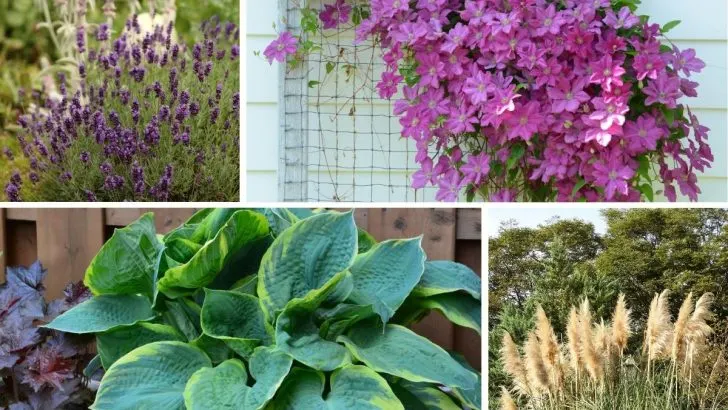If you’ve ever admired the cascading beauty of clematis vines adorning a garden wall, you’ll understand their allure. But clematis doesn’t have to be a solo act.
Pairing it with other perennials can transform your garden into a vibrant tapestry of colors and textures. By choosing the right companions, you enhance not only the visual appeal but also the ecological health of your garden.
Why does companion planting matter? Aside from aesthetics, it offers practical benefits such as improved soil health and pest control.
Clematis, with its often delicate, sprawling nature, benefits enormously from the presence of sturdy neighbors.
These companions can support their growth, share soil nutrients effectively, and attract beneficial insects.
1. The Elegant Echinacea (Coneflower)
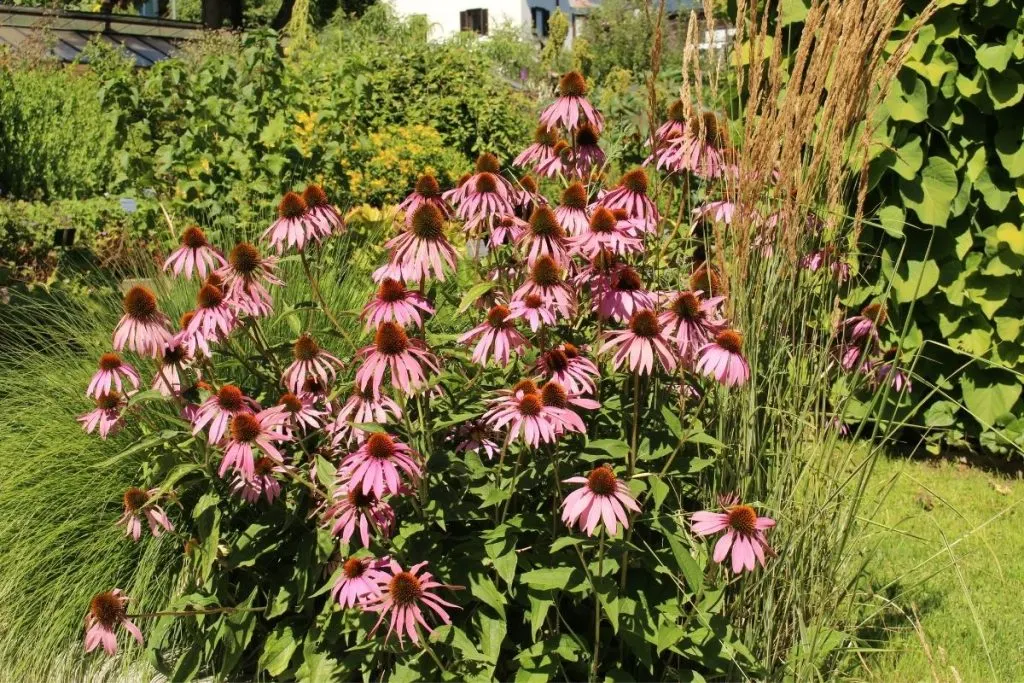
With their bold, daisy-like blooms, echinaceas bring a striking contrast when paired with the delicate, star-shaped flowers of clematis.
These hardy perennials thrive in similar growing conditions—plenty of sunlight and well-drained soil. Their sturdy stems and coarse leaves provide a textured backdrop that enhances the soft elegance of clematis.
What makes echinacea truly special is its longevity in the garden. Not only do they bloom for months, but they also self-seed, ensuring your display becomes more robust with each passing year.
Besides their visual appeal, echinaceas are renowned for attracting bees and butterflies, bolstering your garden’s biodiversity.
2. Graceful Grasses: Miscanthus

Miscanthus, or ornamental grasses, offer a contrasting form to the climbing habit of clematis. With their tall, slender stalks and feathery plumes, they create a sense of movement and fluidity, complementing the static beauty of blooming clematis. Perfect for adding height and drama, miscanthus thrives in similar soil and sun conditions.
These grasses are particularly valuable in the garden for their resilience and low maintenance. As the seasons change, miscanthus will continue to add structure and interest, even when the clematis isn’t in bloom. Their rustling stems bring a soothing sound to your garden, adding another sensory delight to your display.
3. Hearty Hostas
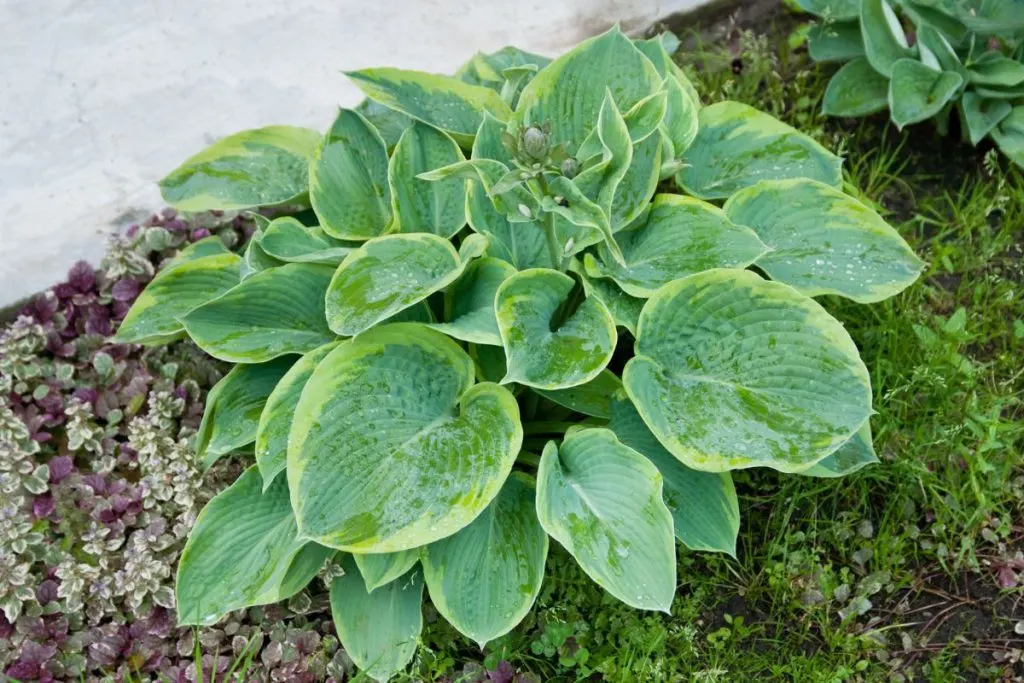
While hostas thrive in shade, they can also serve as excellent companions to clematis in partially shaded spots. Known for their lush foliage, hostas offer a stunning foil to the airy blooms of clematis.
Their broad, textured leaves provide a dense ground cover, which helps to retain soil moisture and suppress weeds, benefiting both plants.
Hostas are celebrated for their ease of care and remarkable range of colors. Whether you prefer a classic green or a variegated variety, there’s a hosta to match your garden design. By planting them near clematis, you establish a layered effect that amplifies the visual interest in your garden space.
3. Alluring Astrantia (Masterwort)
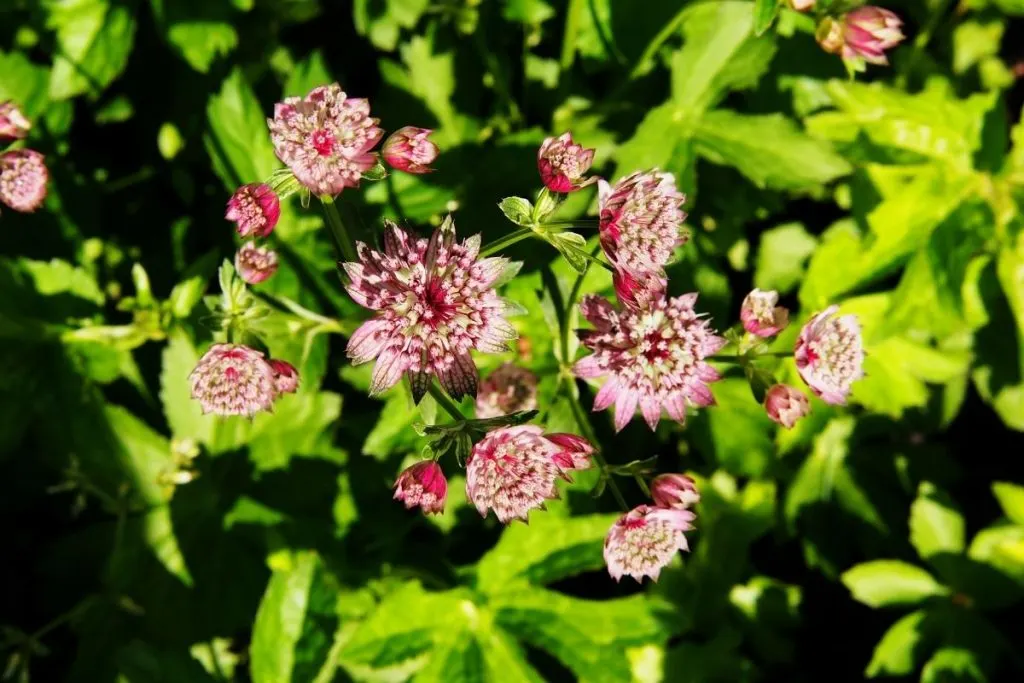
Astrantia, with its unique pincushion-like flowers, offers an intricate beauty that pairs harmoniously with clematis. Its delicate blooms, often in shades of pink, red, or white, add a whimsical, romantic flair to the garden. Astrantia flourishes in similar conditions and can tolerate some shade, making it a flexible planting companion.
Apart from their aesthetic value, astrantias are enduring performers in the garden. They bloom for an extended period and are relatively pest-free, ensuring that your garden remains vibrant and healthy.
Their nectar-rich flowers are also a draw for pollinators, making them a beneficial addition to any garden ecosystem.
Fascinating Ferns
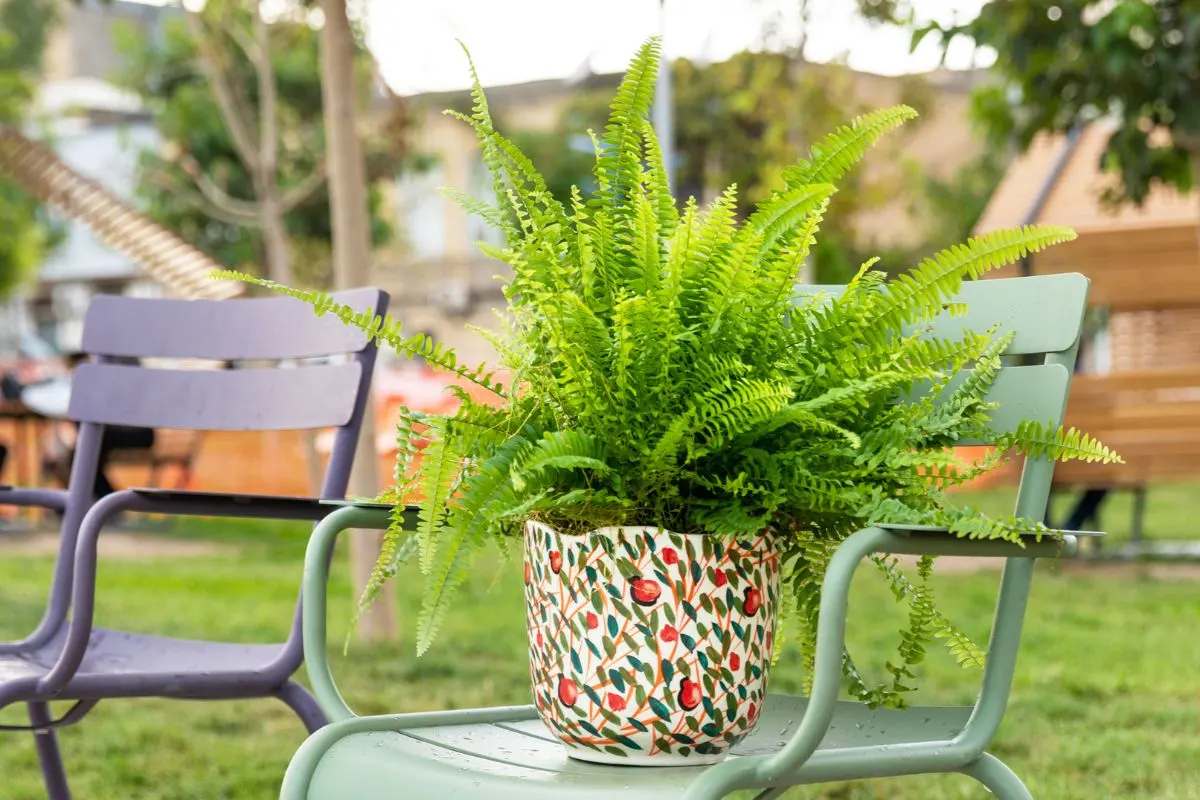
Ferns, with their intricate foliage, provide an excellent textural contrast to the climbers’ blooms. They are particularly effective in bringing depth to your garden and can thrive in the dappled shade provided by taller structures or trees. While not flowering, their feathery fronds offer an evergreen element that keeps your garden interesting year-round.
Ferns require minimal care and adapt well to a variety of conditions, making them a perfect low-maintenance companion plant. Their presence can accentuate the vivid colors of clematis flowers, providing a balanced and tranquil landscape.
Enchanting Lavender
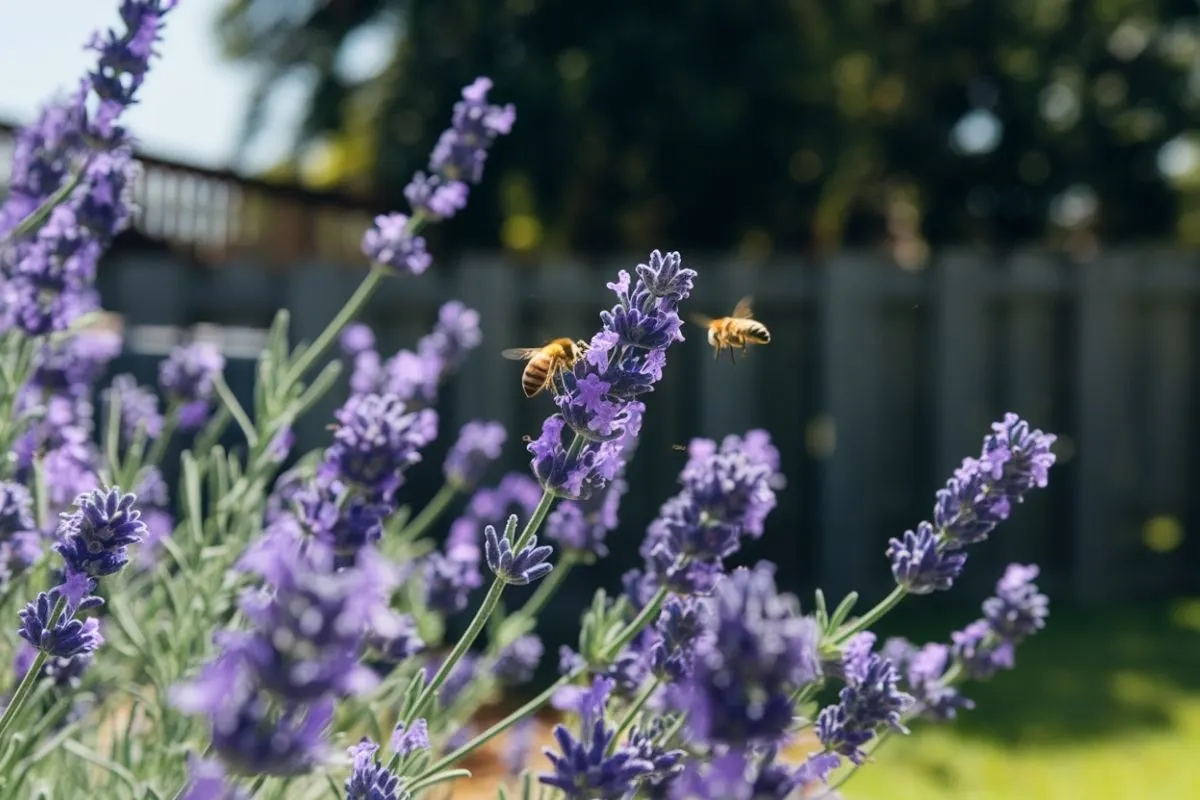
Nothing beats the classic appeal of lavender and clematis side by side. Lavender, with its aromatic foliage and spikes of purple blooms, provides a fragrance that enhances any garden experience. Both plants thrive in sunny conditions with well-drained soil, making them ideal partners.
Lavender’s compact and woody structure offers a stark contrast to the climbing clematis, creating a balanced visual interplay. Additionally, its scent is a natural deterrent to pests, potentially reducing the need for chemical interventions in your garden.
A Breathtaking Garden Awaits
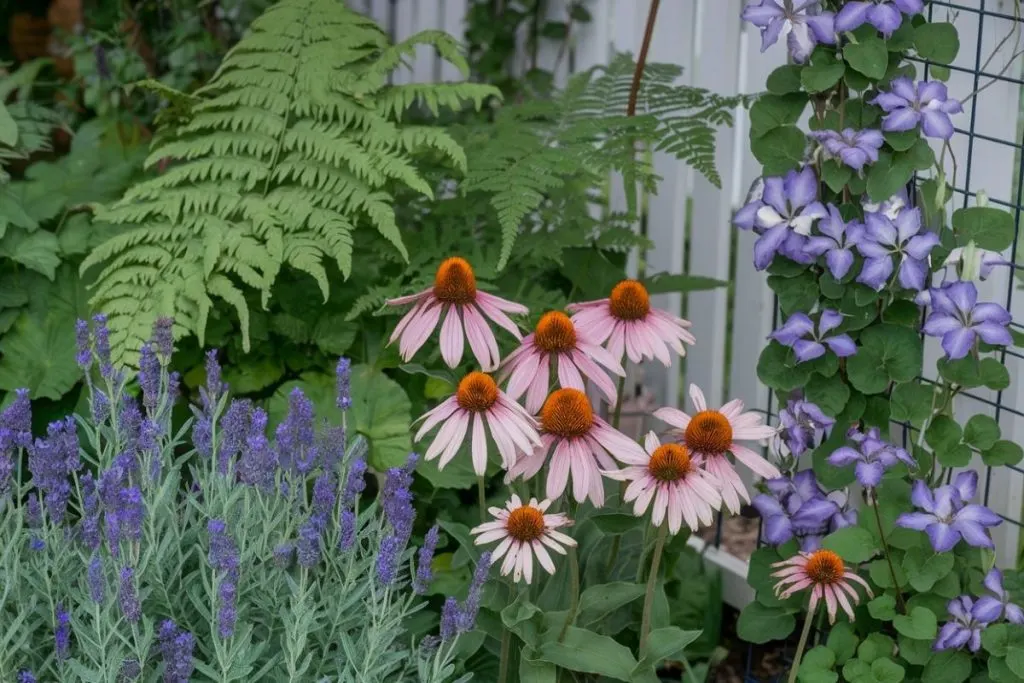
Pairing clematis with the right perennials can take your garden from ordinary to extraordinary. By selecting plants like echinacea, miscanthus, hostas, astrantia, ferns, and lavender, you not only create a visual masterpiece but also build a harmonious ecosystem in your backyard.
Each plant offers its unique charm and function, ensuring your garden provides beauty and biodiversity throughout the year.
Now is the perfect time to assess your garden space and consider how these stunning combinations can enhance your landscape.
Invest in these companions to create a garden display that will captivate you and your visitors season after season.

